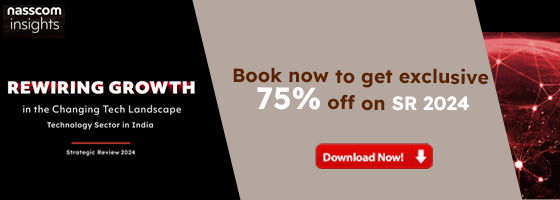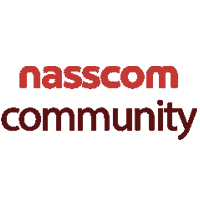Speak & Share | Attend & Learn | Sponsor & Support
As part of #IndiaProductified mission, this virtual “Unconference” will share experiences and explore unique technological capabilities & products that can play a significant role to “Build with Bharat” in the world with new normal. It is crystal clear, world will have unique economic, cultural and societal challenges. Nowhere will these be more starkly visible than in rural & semi-urban India euphemistically called “Bharat”.
“Bharat” with its unique socio-economic needs – and its own biases and lesser digital skills – will challenge any company which tries to force fit products, processes and marketing plans pre-designed for urban markets. It’s clear that solving these and “Building for Bharat” will be ever more important to any business looking to grow aggressively.
We know “Bharat” warms up to certain capabilities: Voice-enabled products; Video (vs text); Vernacular. What else?
How do we build Digital skills? Will Tele-medicine become a critical need, propelled by Niti Aayog’s new guidelines? Over the years we saw the “Feminisation” of Indian agriculture; will we now see its “Mechanisation” to overcome the demand-supply mismatch for labour? Can Ecommerce platforms meet Bharat’s supply chain needs for Agri and small industry? How can we facilitate working from smaller towns, going beyond WFH in a big city?
Come and join us to “Build with Bharat” by improving economic, social and environmental outcomes. Your vote will help decide an agenda that suits your preferences in this “Unconference”. This event has been conceived with an entirely unique format and through a community collaboration approach.
Attend & Learn
In an Un-conference, the learning and sharing starts with choosing what you want to learn! Prior to the virtual unconference, registered attendees will vote topics, and the most popular ones are included in the agenda. You can stay engaged on a continuous basis and influence topics for future events through suggestions in your sign-up form. You can enjoy the #IndiaProductified journey in three simple steps:
- Register here as attendee.
- Vote for topics and join the ones that most pique your interest [Voting will open on 26th May 2020]
- Can’t join this session, signed up to join and be engaged in the #IndiaProductified dialogue, you can do so here
Speak & Share
In the by product-professionals, for product-professionals dialogue; anyone can propose a session topic and can submit a proposal here. As much as it could be about what worked for you, your product, your organization; it could equally be about what didn’t or could be done differently—every nugget matter! The agenda is curated from the proposed topics using live attendees voting. To help the audience have a better understanding of your proposed session, in addition to topic details, it is highly recommended to provide a precise overview of the topic in your abstract. You can take some inspirations from the following:
- The market size for vernacular content in India is est to be $53 Bn. Is Vernacular vital for engagement with “Bharat” consumers?
Engaging with customers in a diverse country like India is not easy and “Bharat” is driving a massive shift to a different consumer profile and demographic. Is vernacular now indispensable in search, content, SEO for applications like eCommerce, Medical, Education or Social messaging? Do Consumers prefer communication in their preferred language and even dialect – for every medium be it video, voice or text to navigate their digital journey? What are the best practices and learnings in this space? - Voice – as a big enabler. Has Voice struck the right chord?
Voice searches in India has seen 270% growth year-on-year and covers 80% of the Indian digital user’s need for search, discovery and fulfilment. Bharat users seem to prefer “speaking Vs typing” – to help overcome the fact that most apps are tuned for English. (E.g.: Users would probably type or say “Book ticket Mumbai se Dilli” as they think in vernacular). What are the recommendations for product strategy in “Bharat” knowing that 50% of searches are already Voice based in 2020? What sectors are yet to use “voice” as a core strategy? - Video – an essential tool for driving engagement?
Videos are extremely powerful in narrating a story and creating a Brand’s emotional chord. In 2019, 87 percent of companies used video for digital marketing and 76 percent of B2C content was video, a trend that will accelerate since Video has a higher engagement rate and retention too. The massive success of YouTube, Tiktok, OTT players like Hotstar are proof points for the huge uptake of Video thanks to affordable data. What will help marketeers leverage Video to engage consumers in Bharat? What are the Tech innovations that will drive this adoption? Will video play a critical role across all sectors in Bharat? - Tele-medicine is expected to create a US$5.4 Bn market opportunity by 2025. Will this help bridge the rural and urban health divide?
Lockdown resulted in major hospitals chains offering remote consultation and Tele-medicine services via video, audio or text. The Government’s Tele-medicine guidelines issued end March 2020, have clarified regulations for start-ups and investors paving for growth in this segment. Will Tele-medicine be truly able to help bridge the healthcare gap between rural and urban India? Will innovation in this sector overcome worries on effectiveness and privacy? Will the cost efficiencies through reduced travel pave the way for its growth esp. in “Bharat”? Besides tele-medicine, what are the other game changing HealthTech technologies to impact Bharat? - “Working from Small Towns” (WFST) as an extension to “Work From Home” (WFH). Having 25% staff as “WFST” can add 5% to the IT Company’s EBITA.
A NASSCOM study estimates that 40-50K graduates from Tier 2/3 towns, who though employable by metro-based IT companies, choose not to migrate. Can the “triple benefit” of small towns – staff costs being lower by 40-50%, good communication infra and attrition levels lower by 60-70% give a boost to the economic progress in smaller cities? Can this also alleviate social pressures by employing more women who don’t migrate to the metros, also reducing pressure on the infra in big metros? What processes and technologies can help accelerate this adoption? What are the real-life experiences and caveats to watch out for? - Digital Education & Learning – the next big wave of change?
Not too long ago, digital education was literally an experiment – to supplement and complement classroom activities. The current global lockdown has paved the way for digital education to take the main stage and as a result, we are witnessing unprecedented changes in how educational institutions – both formal and informal, are teaching, engaging students and conducting assessments. Digital is now the DNA of the learning-teaching construct and not anymore peripheral. What is the future look like? Will we have digital-native schools? Our metrics of assessing the quality of education being imparted have been honed through decades of classroom observations. How do we translate this into the new digital world? And specifically, for “Bharat”? Should we move from “One Laptop per child” to “One Smartphone per child”? How do we embrace all – the Digital Natives / Early converts / Reluctant (teachers)? - Will eCommerce be vital for “Bharat” consumers and MSME’s – for personal consumption and supply chain needs – including Agri produce, pesticides, Auto / Mfg. components etc?
In the last decade, the rising eCommerce tide lifted smalls start-ups into large, global brand names, primarily driven by the urban consumer. What happens next as “Bharat” embraces eCommerce? Can we glean best practices from the past decade and repurpose them as core eCommerce principles for MSMEs across various sectors? Can the triple play of fast connectivity, smartphones and a growing consumption economy help “Bharat” leapfrog into the global landscape? After the Green Revolution and the White Revolution, will the eCommerce be the next revolution to power Bharat’s economy? - Will eCommerce be vital for “Bharat” consumers and MSME’s – for personal consumption and supply chain needs – including Agri produce, pesticides, Auto / Mfg. components etc?
- “Modernisation” of Bharat via Mechanisation?
Paradoxically, over the last few years, there has been an acute labour shortage in many states, only accentuated by the present migration during Covid, causing construction, factories, agriculture harvesting to struggle. Earlier we saw the “Feminisation” of Bharat as the men migrated to the cities; will we now see the “Mechanisation” of Bharat? Will Drones, IoT 4.0, “Uberisation of farm equipment” play a crucial role by reducing costs, and improving effectiveness in areas such as Construction, Defence, Disaster Management, Smart Manufacturing etc? Will critical projects like Swach Bharat be a distant dream, without mechanisation for effectiveness cleaning rivers, sewage etc? When large populous states like China adopted mechanisation in a big way, should India rely on traditional labour-based techniques? - Revitalising Bharat economy – through Entrepreneurship, Vocational skills in new areas leveraging Remote working, Digital infrastructure etc?
The ongoing migrant crisis has brought to the fore the lack of employment opportunities and is hollowing out many of our small towns and villages with the residents migrating to metros, overloading and stretching their infrastructure. Globally SME’s support 30 to 40% of employment, but in India that number is very dismal (~10-11%). In the post Covid era, how can we create alternate avenues for jobs in Bharat, help small & medium enterprises to grow in these sectors and upskill our workforce? - Community Engagement Platforms: Agile “Humanitarian Response Systems” are needed to ensure adequate support for the underprivileged sections.
The ability to accurately monitor, forecast and deliver to the livelihood needs of individual families within underprivileged communities – urban & rural – will be key in times of societal disruptions e.g. Covid-19. How can we provide a two-way flow of information – allowing ground level data to be integrated across localities, districts, state for effective relief? How can we leverage tech capabilities (e.g. Maps, Vernacular, Voice etc) to integrate with real-time ward level details on essential services (e.g. ration shops, pharma, petrol bunks, hospitals, etc) and with private NGOs (e.g. food kitchens, medicine banks etc)? - Digital Survival Skills? How do we help “Bharat” consumers survive and remain safe in an increasingly Digital jungle?
In today’s world, especially as amplified by the lockdown, being comfortable with digital platforms is vital – to make necessary purchases, make payments, use the internet to search, conduct business transactions and even for entertainment. While in general consumers in “Bharat” are adopting digital helped by the 3Vs (voice, video and vernacular), how can we accelerate this trend by reducing their digital biases caused by lack of awareness? How can we teach them to survive in an increasingly digital world? How can we teach them how to conduct themselves safely in a digital environment – keeping their financial assets, business interests and most vitally, their identity safe?










